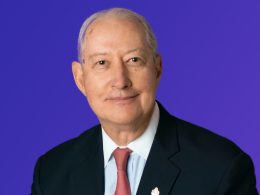by Joseph V. Amato, President and Chief Investment Officer—Equities, Neuberger Berman
The U.S. is in the grip of winter. In the South-Central region, record-low temperatures are freezing wind turbines and causing a wave of power cuts. Even our team members in Chicago, noted for its harsh winters, have been complaining about the brutal cold. It’s the kind of weather that has you piling fuel on the fire and putting off concerns about the heating bill.
Despite strong signs of improvement, the U.S. government is acting as though the economy is still in a similar deep freeze. After putting $3 trillion under the stove back in May 2020 and another $900 billion just two months ago, another stimulus package worth up to $1.9 trillion looks set to arrive by the middle of March—potentially followed by $2 trillion of additional infrastructure spending over the next decade.
Excess Savings
Many people are still out in the cold due to the coronavirus crisis. They need help. Infection rates have come down substantially in recent weeks, but far too many people are still getting sick and in hospitals. The jobs market, while markedly better than last spring, remains challenging.
But this same economy saw U.S. core retail sales rise by 6% month-over-month in January, far ahead of consensus forecasts of 1%. That easily erases the sluggish holiday season data.
Goldman Sachs estimates that U.S. households have accumulated some $1.5 trillion in excess savings over the past year. They think that could rise to $2.4 trillion by midyear. By their reckoning, a fifth of that could be spent within 12 months, adding two full percentage points to U.S. GDP growth all on its own. January’s retail sales suggest consumers have started spending already, buoyed by New Year confidence and coronavirus vaccinations.
A range of recent data indicate that corporations are spending, too: Last week alone saw upside surprises in U.S. producer prices, Japan’s fourth-quarter GDP, machinery orders and Tankan manufacturing sentiment, and South Korea’s exports. This appears to be showing up in companies’ bottom lines, with fourth-quarter S&P 500 earnings up 3 – 4% year over year, significantly better than the original forecasts of down 7 – 10%.
Are we about to add enormous fuel to a fire that is well on its way to heating up?
Risk of Overheating?
The debate is certainly heated.
The latest 10-year outlook from the Congressional Budget Office offers comfort to those who don’t want to worry about the fuel bill. The forecast average deficit looks big but manageable by today’s standards, particularly with rates where they are. Inflation is forecast to rise gradually, averaging just 2.1% later in the decade, with the 10-year Treasury yield rising sedately to 3.4% by 2031.
That aligns with what central bankers are saying. Last week, Federal Reserve Chair Jerome Powell again downplayed the inflationary potential of the stimulus proposals. In Europe, after the Bundesbank president warned of a surge in Germany’s prices, the European Central Bank’s Christine Lagarde was quick to note that Eurozone inflation is expected to remain below target for several years.
But skeptical voices are rising—and not always from the usual suspects. Former Treasury Secretary Lawrence Summers, who worked in both the Clinton and Obama administrations and was a noted fiscal dove in the aftermath of the Global Financial Crisis, has warned that the coming stimulus threatens “inflationary pressures of a kind we have not seen in a generation.”
Our own view is that inflation will pick up—as seems inevitable given the growth outlook, policy support and the weak inflation numbers from last spring—but that fears of problematic inflation (sustained levels in the 3 – 4% range and beyond) are unwarranted.
A Difficult Transition
Markets, however, may be having second thoughts.
Two weeks ago, our fixed income colleagues reiterated their call for the U.S. 10-year Treasury yield to reach 1.50% by the end of the year—yet with the risk significantly skewed toward higher rates. It has since leapt by more than 10 basis points and already stands at around 1.30%. Meanwhile, the dollar has bounced, and gold, a haven from near-zero rates, has been sliding.
In equity markets, things are calmer, at least on the surface. That likely reflects the soothing words from the Fed. But soothing words may count for less if central banks’ inflation and labor-market objectives are realized or exceeded. As we discovered during the Fed’s 2013 “Taper Tantrum,” this is a difficult transition to make. There is a lot riding on it, given markets currently seem to be addicted to the liquidity and leverage in the system.
Summers wrote ominously about “consequences for financial stability.” For sure, we think there could be significant volatility ahead as investors try to gauge the temperature of the recovery and the Fed’s policy approach. But let’s not forget that accelerating vaccine rates and decelerating infections will enable the economic reopening to which we all aspire. Equity markets’ “enjoy-it-while-it-lasts” psychology is understandable given the number of important near-term positives: policy, vaccines, low rates and economic momentum. It’s good news that things are warming up—but let’s all remember that a fire won’t keep us warm if it ends up burning down the house.
Copyright © Neuberger Berman















